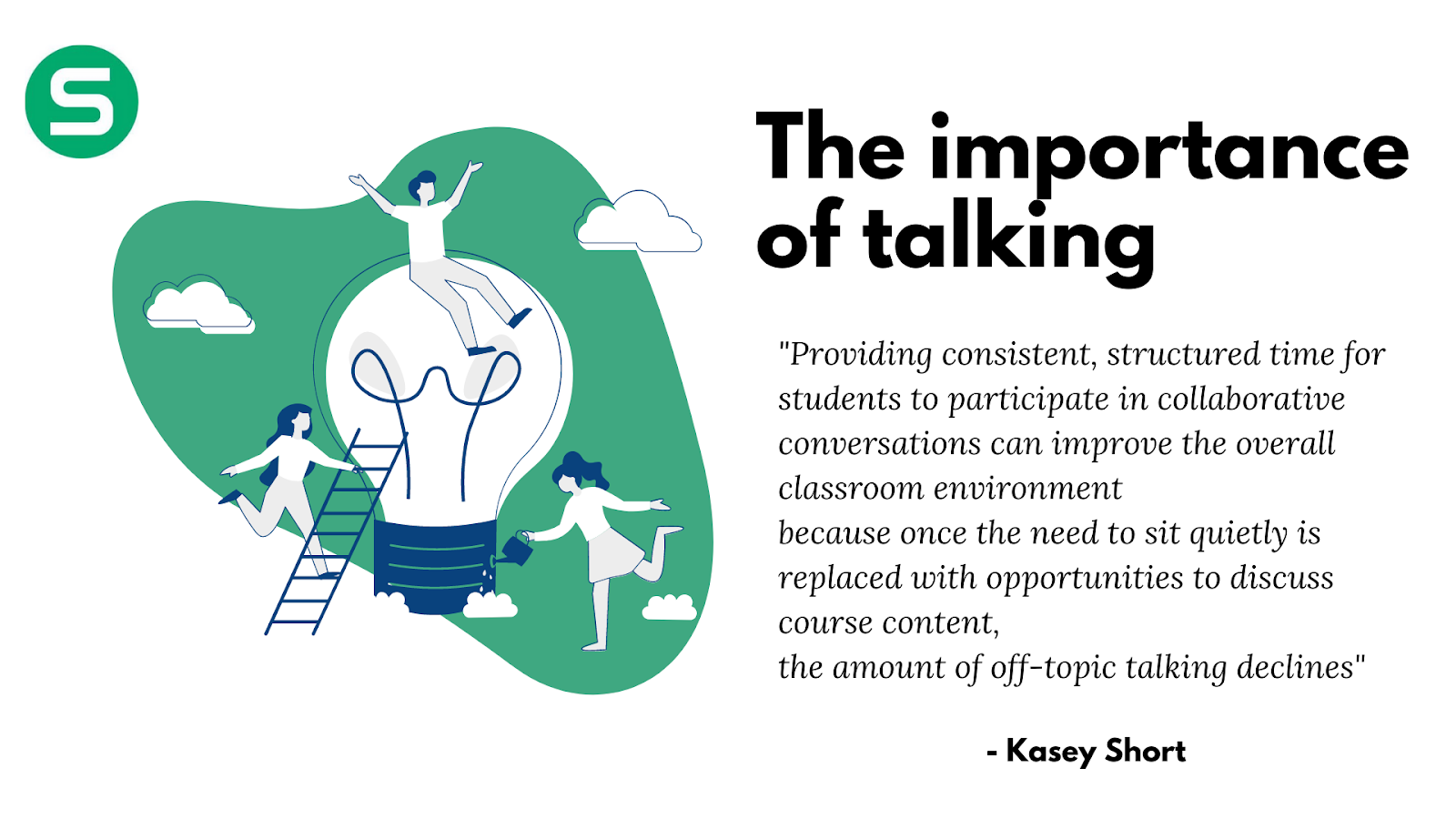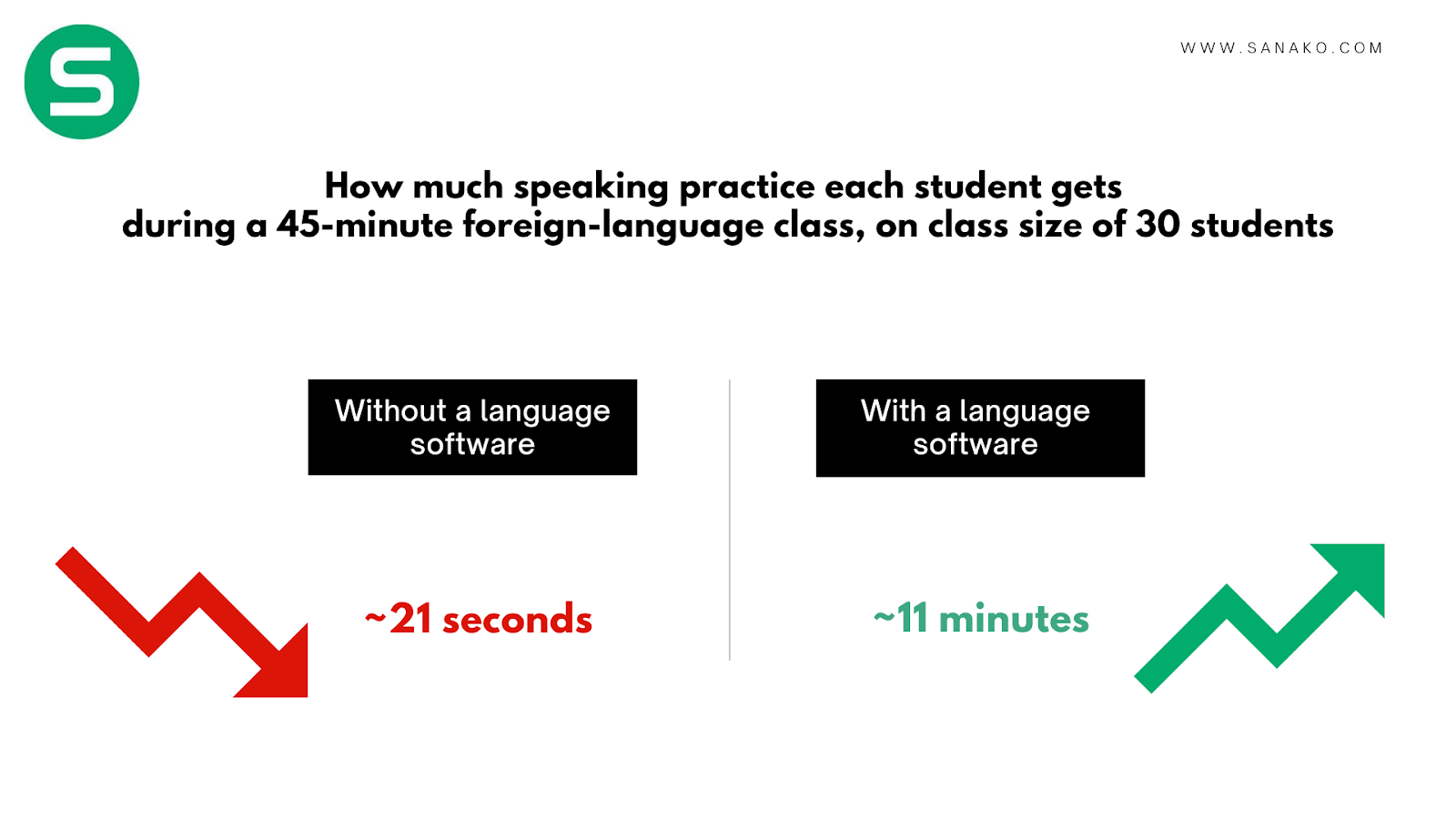Developing speaking skills in a foreign language is perhaps one of the most complex tasks, for language learners of every age. Getting students to actively practice their speaking skills is not an easy task. Most of us are shy to speak up especially when using a foreign language that we don’t yet master. This creates a problematic loop: students can only learn to speak by speaking, but how to get students to talk more in language classes in the first place?
The author of this blog post herself enrolled a few years ago in a Master of Arts in International Relations at an Italian university. The Master’s program was taught entirely in English and most of the faculty was composed of British, American and German professors. Most students were Italian or from other Central European countries. Interactions between students and professors, therefore, could only be in English.
The difficulties this detail entailed were no small matter. On the first day, a professor from Washington University, after concluding his presentation, asked the fateful question: “questions, comments, ideas?”. After the two and a half minutes of long silence that followed, he added a faint “please”.
The class was too intimidated by the idea of speaking in a foreign language in front of their peers, even though some students actually desired to take part into the conversation.
This scene aptly describes one of the biggest difficulties encountered in university and school classrooms, namely, getting students to actively participate in the lesson. The problem is even more pronounced in foreign language classes, where the embarrassment of having to speak in public is compounded by the difficulty of having to process complex thoughts in a language that is not one’s own.
However, the difficulties encountered by students in speaking, if not overcome, constitute an obstacle to their education. In fact, they affect the ability to organize, develop and communicate reasoning.
This article aims to illustrate the importance of developing speaking skills in second language learning and to provide some suggestions on how to encourage students to speak more in language classes.
The paradox of speaking a foreign language
To actually master a foreign language, one must be able to speak it with a certain degree of fluency. Having good pronunciation, a varied vocabulary, knowing how to apply grammar rules: this set of knowledge and skills is what makes a person truly fluent in a foreign language. It seems an obvious statement, but many schools still struggle to really come to terms with this idea.
As we have examined in an another blog post, language curricula in schools around the world do not devote enough attention to developing learners’ speaking skills. The implementation of communication-based activities is often relegated to the margin of classroom activities.
We are therefore confronted with the paradox of speaking: it is the fundamental skill for learning a foreign language, yet it is also the least trained and developed.
Creating an environment conducive to communication and discussion
In order to involve students in a communication-based learning process, it will be necessary to rethink some aspects of teaching, starting from the traditional framework of the frontal lesson.
During speaking-based activities, it can be useful to reduce the spatial distance — which is often also relational distance — between students and teachers.
Creating a non-hierarchical environment is important to develop a dialogue with and between students and encourage them to speak in the target language. It will be easier to promote communication if learners feel they are engaged in a real conversation rather than an oral examination.
In fact, developing a non-threatening environment is very important in helping learners overcome language anxiety. This means that if the learners feel that they are in a context where they can practice freely, without fear of being judged, they will be much more likely to speak.
But how can a language teacher create a relaxed and engaging communication environment? Starting with ice-breaking questions, telling stories or jokes to students can be a good way to progressively get the conversation going.
Once questions have been asked, it is important to allow adequate time for students to think of a response. A great piece of advice that has been given in this regard is to “don’t steal the struggle”.
In other words, students need the right amount of time before answering a question. Instead of intervening immediately in front of a student who demonstrates difficulty in developing an answer, the teacher should be patient and observant.
It is important to ensure that classroom conversation takes place at the pace of a natural, everyday dialogue, not on the question-answer pattern typical of examinations.
Fostering dialogue within the virtual classroom when teaching remotely
Shaping the learning environment so that it encourages participation is also a necessity in the virtual classrooms in which more and more educational activities are taking place around the world.
Organizing a virtual classroom requires specific preparation from a technical point of view. Equally important, however, is to take care of the development of relationships between students and teachers within the online classroom.
Stanford University has prepared guidelines on measures to be taken to develop participation and a sense of community in the virtual classroom. Among the suggested measures, there are:
- Maintain constant communication with students via email / messaging apps in order to provide support in the practical management of learning activities;
- Plan ahead for class presentations so that students can introduce themselves to each other and to the teacher;
- Involve students in the definition of the rules of behavior during the virtual lesson, in order to create a shared classroom culture.
This set of community-building measures is useful to create a sense of belonging and familiarity within the classroom, both in presence and remotely. Establishing the right environment and culture within the classroom is essential to stimulating students’ speaking skills.
How educational technology supports speaking-based language learning activities?
Speaking-based activities should be carefully crafted. So, on the one hand conversation tasks should be as natural as possible, but on the other hand it should not result in a casual dialogue.
Speaking based language learning activities must be aimed at achieving the goals set by the teacher.
In order to effectively carry out conversational exercises, several steps are needed, including the selection of topics by the teacher, the introduction of the chosen topics to the students, the planning of how to manage the interactions during the exercises.
Technology solutions like Sanako Connect can support the planning and execution of speaking exercises both within the classroom and in remote learning. Language learning software tools can be a great way for students to practice their communication skills within a protected environment where the pace of learning is calibrated to the needs of the learner. Language teaching software can significantly increase and optimize the time spent on speaking skills during language classes.
With a language teaching software, actual speaking time per student can be considerably higher depending on what type of exercises the teacher conducts. In a traditional language classroom setting without any technology tools, each student has usually less than 1 minute on average per each class allocated for speaking-based activities. Using tools that allow each students to speak at the same time and record themselves for self-reflection or allowing the teachers to review and comment on their recording, increases the time each student can spent on speaking-based activities in many cases up to tenfold.
In the case of language teaching, the lack of adequate practice in speaking skills will do profound damage to the ability to achieve fluency in a second language. While national curricula do not give adequate space to communication-based activities, this does not mean that teachers should give up on helping their students practice this key language skill.
By working with the classroom environment and using educational technology, it is possible to make speaking tasks an integral part of the language learning journey.
Sanako provides language teaching tools that are designed to maximise the opportunities for speaking and actually using the target language in formal language education and during language classes. Click here or the banner below to learn more about Sanako Connect.
This blog post was last updated 14 June, 2023.



